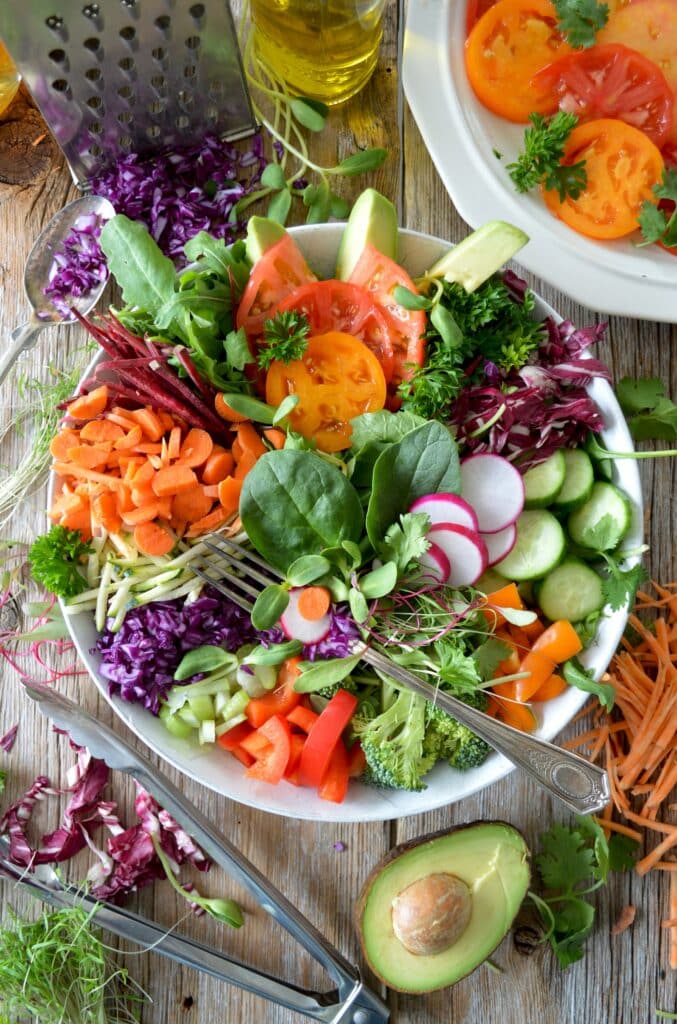
What Is A Low Carbon Food?
Food production results in a huge volume of greenhouse gases, but these vary greatly between foods. It’s also one of the areas where our individual choices, like transportation and heating and cooling, that have potential to impact carbon emissions. By choosing low carbon foods but maintain the same level of nutrition, we directly reduce carbon impact.
However, before we can do that, we need to know what are low and high carbon foods in the first place.
Greenhouse gas emissions from food are a little bit more complicated than from energy generally because you’re dealing with three different gases: methane, nitrous oxide, and carbon dioxide. Methane emissions come largely from grazing animals like cows and sheep. Nitrous oxide emissions are mostly the results of fertilization. And carbon dioxide comes from mechanical processes like tilling and packaging processing harvesting. Rather than getting too technical, I thought I’d explain the carbon intensity of seven different foods: tomatoes, beef, bread, bananas, chicken, potatoes, and cheese. When I talk about the carbon intensity, I mean how many kilograms of carbon dioxide equivalent it takes to produce one kilo of each of these foods.
Carbon Dioxide Varies By Factors of Up To A Hundred Between Foods
The lowest carbon of these seven foods is the potato. Just 300 grams of carbon dioxide equivalent to produce a kilo of potatoes. Next up is the banana at 1.2 kilos of carbon dioxide equivalent. Followed by bread around 1.5 kilos. The tomato at two kilos. Chicken is 2.8 kilos. Cheese is 8.5 kilos. Finally, beef is about 23 kilos which puts it somewhere up there.
From the examples given, it is clear that the carbon intensity of food production varies greatly. The interesting question for me is why potatoes are such a low carbon food. It is obvious that potatoes don’t result in any methane emissions from animals, but they also don’t require a lot of energy to till the land or for a greenhouse or for lighting or for processing. Furthermore, they don’t require a lot of fertilizer, making them a low carbon food. Other low carbon foods include apples, pears, cherries, grains like wheat and corn, tubers, legumes, etc.
Seasonality and Location Affect Carbon Emission Estimates

Two points in particular are worth noting about the data. The first is that these are point estimates, and each foodprint could vary considerably depending on how and where it is produced. For example in the UK one can get out-of-season local tomatoes that have a foodprint of 5 kg CO2e/kg or some imported Spanish ones for about 1 kg g CO2e/kg (hot-housing outweighs transport).
The second is that these are only the emissions up to regional distribution center. Once you count the emissions from retail losses and consumer waste the emissions associated with food consumption can be 50-100% higher. Moreover these figures don’t account for land use emissions.
Lets Define A Low Carbon Food As Requiring 1 kg CO2/kg Or Less To Produce
For simplicity let’s define a low carbon food as one that has production emissions of 1 kg CO2e/kg or lower. By that definition there are lots of low carbon foods including:
almonds, apples, apricots, avocados, beans, cabbages, carrots, cherries, chestnuts, chickpeas, currants, dates, lemons, lentils, maize, millet, oats, oranges, peaches, pears, peas, plums, potatoes, raspberries, sugar, wheat
If you are lucky enough to live somewhere where you can grow tomatoes, bananas and mellons outside these would also meet our low carbon food criteria. Much of the data for this video and post come from the report How Low Can We Go, by the excellent Food Climate Research Network in the UK.
If you’re interested in how diet choice effects your total foodprint then check out the Carbon Foodprints of 5 Diets Compared. We also go into more detail for people who want to maintain protein and meat intake, for a look at low carbon meats. Finally, we compile numbers for the carbon content of protein sources and alternatives to meat should you decide to eat less meat.
Lindsay Wilson
I founded Shrink That Footprint in November 2012, after a long period of research. For many years I have calculated, studied and worked with carbon footprints, and Shrink That Footprint is that interest come to life.
I have an Economics degree from UCL, have previously worked as an energy efficiency analyst at BNEF and continue to work as a strategy consultant at Maneas. I have consulted to numerous clients in energy and finance, as well as the World Economic Forum.
When I’m not crunching carbon footprints you’ll often find me helping my two year old son tend to the tomatoes, salad and peppers growing in our upcycled greenhouse.
